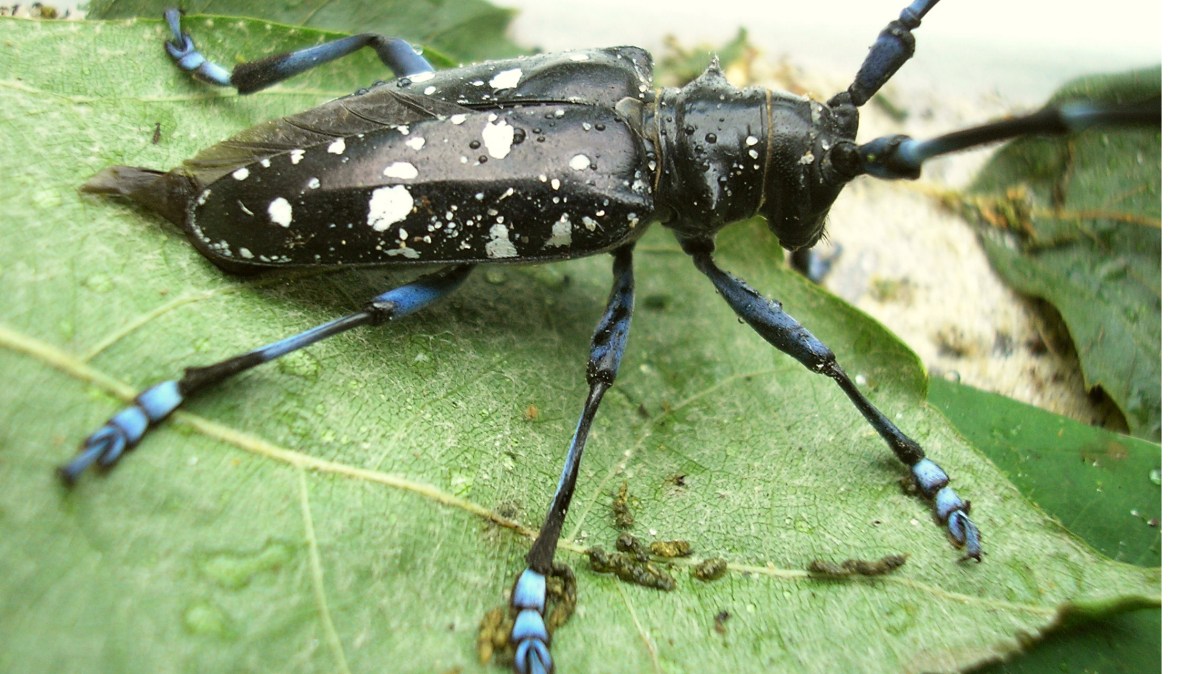The war against the Asian longhorned beetle, a hardwood tree-eating invasive insect, is heating up on Long Island after agencies battling the bug doubled the quarantine area, which now includes most of Amityville.
This spring, the U.S. Department of Agriculture’s Animal and Plant Health Inspection Service (APHIS) expanded LI’s quarantine area from 23 to 51 miles. APHIS and the New York State Department of Agriculture and Markets also removed and destroyed infected trees last month along the Southern State Parkway in sections of East Farmingdale and West Babylon. Officials are additionally asking the public to do its part by keeping an eye out for the beetles.
“The sooner we know where the beetles are, the sooner we can do something about it and the more trees we can save,” Rhonda Santos, spokeswoman for the APHIS Asian longhorned beetle eradication program, told the Press.
The agency has identified 499 newly infested trees and chipped up 481 of the trees so far this year, according to Santos. A total of 2,467 trees on LI have been lost to the Asian longhorned beetle since it first arrived here 18 years ago.
The beetle is native to China, but they first arrived in the United States in Brooklyn in 1996, having stowed away in cargo shipments. The infestation then spread to the rest of New York City and LI, as well as Massachusetts and Ohio.
“This is a serious forest pest,” said Joseph Gittleman, the project manager for the APHIS program in Amityville. “It preys upon perfectly healthy hardwoods. It doesn’t target trees that are already stressed out or dying.”
The recent removal of infested trees came after a West Babylon resident spotted an Asian longhorned beetle last year—the first sighting of the beetle on LI since 2008, in Amityville.
Before the latest incident, the Island had made some progress in stopping the invasion. APHIS declared the eradication of the beetle from Islip in 2011.
Residents can help by checking trees for the Asian longhorned beetle. The insect is about one inch in length and has a black body with white spots and long antennae. The white worm-like larvae feed on the vascular tissues of infested trees and then burrow out of the trees as adults, leaving dime-sized exit holes in the bark.
“It’s a very striking beetle,” said Santos. “When you see it, it will give you pause. Even if you’re not sure, making a report is certainly better than not making one.”
Those who find an Asian longhorned beetle are urged to take a picture and send the photo to APHIS or email the state Department of Environmental Conservation’s (DEC) Forest Health Program at foresthealth@gw.dec.state.ny.us. The beetle should be kept frozen in a plastic container in case officials want to inspect the specimen.
An important way to prevent the spread of the Asian longhorned beetle is to only burn local firewood. The DEC only allows the import of firewood that has been heat-treated to kill pests. State regulations also prohibit the transportation of untreated firewood more than 50 miles from its source.
“If you’re cutting down trees for firewood, don’t give it away to your neighbors and don’t move it upstate,” said Gittleman. “Just use it up wherever you are.”
For more information about the Asian longhorned beetle and other invasive species, visit this website set up for the first New York State Invasive Species Awareness Week, which runs through Saturday.






























